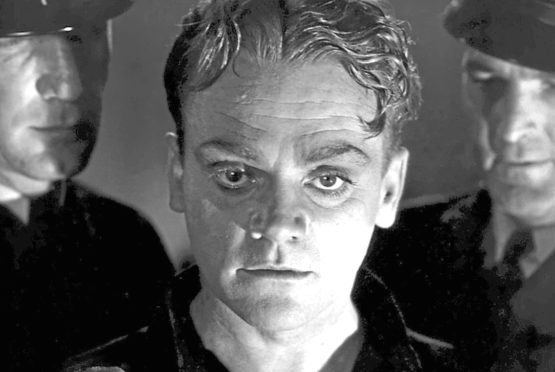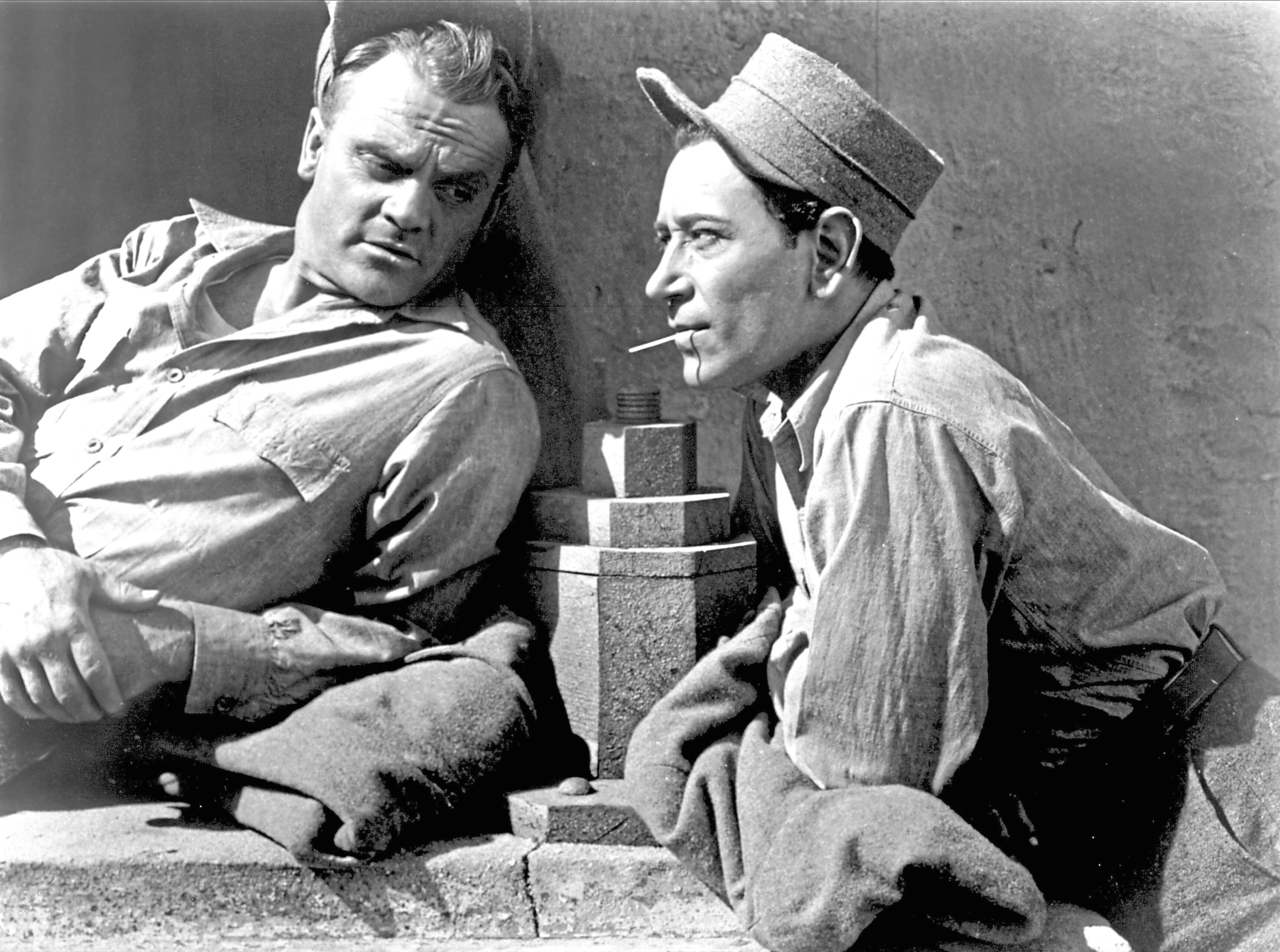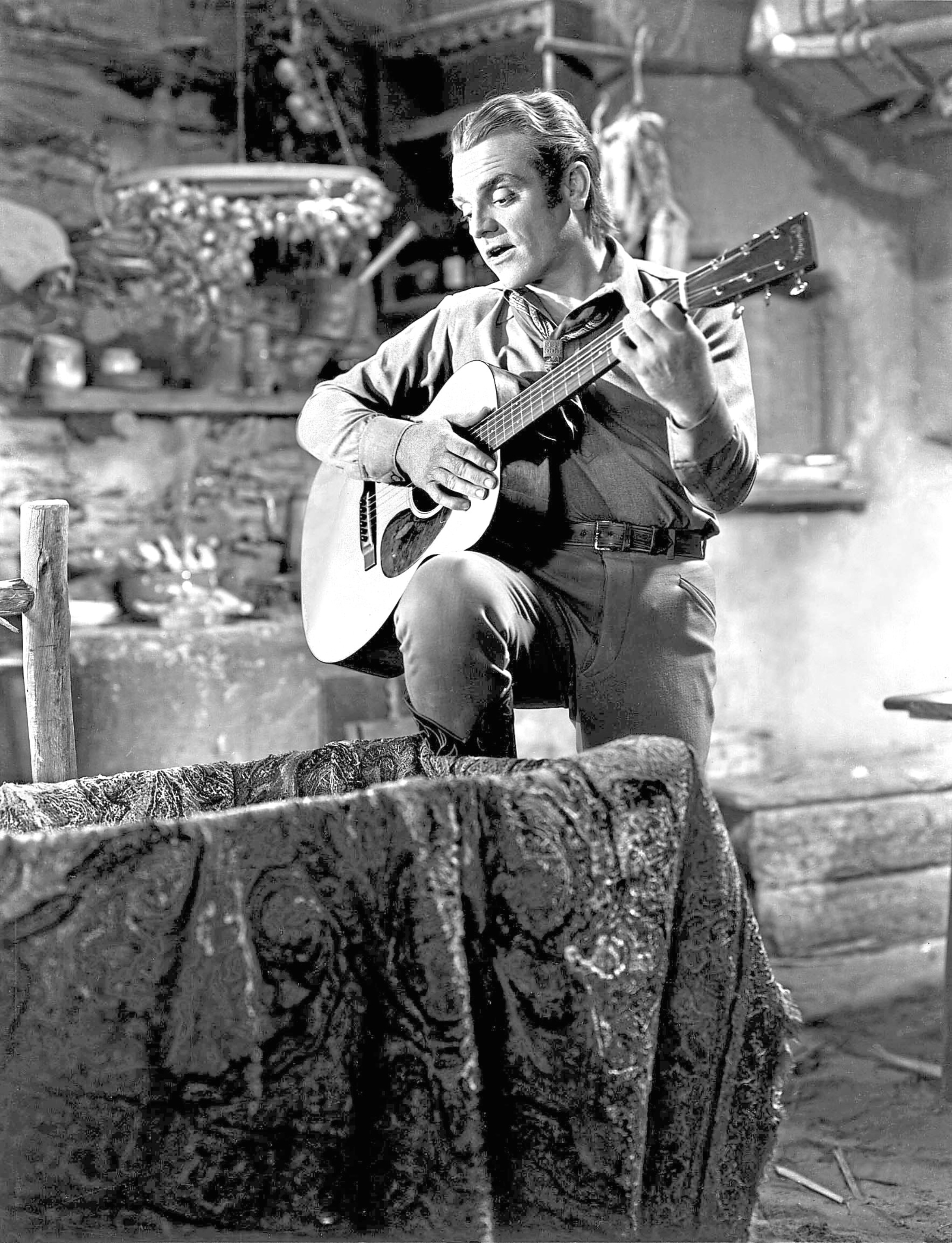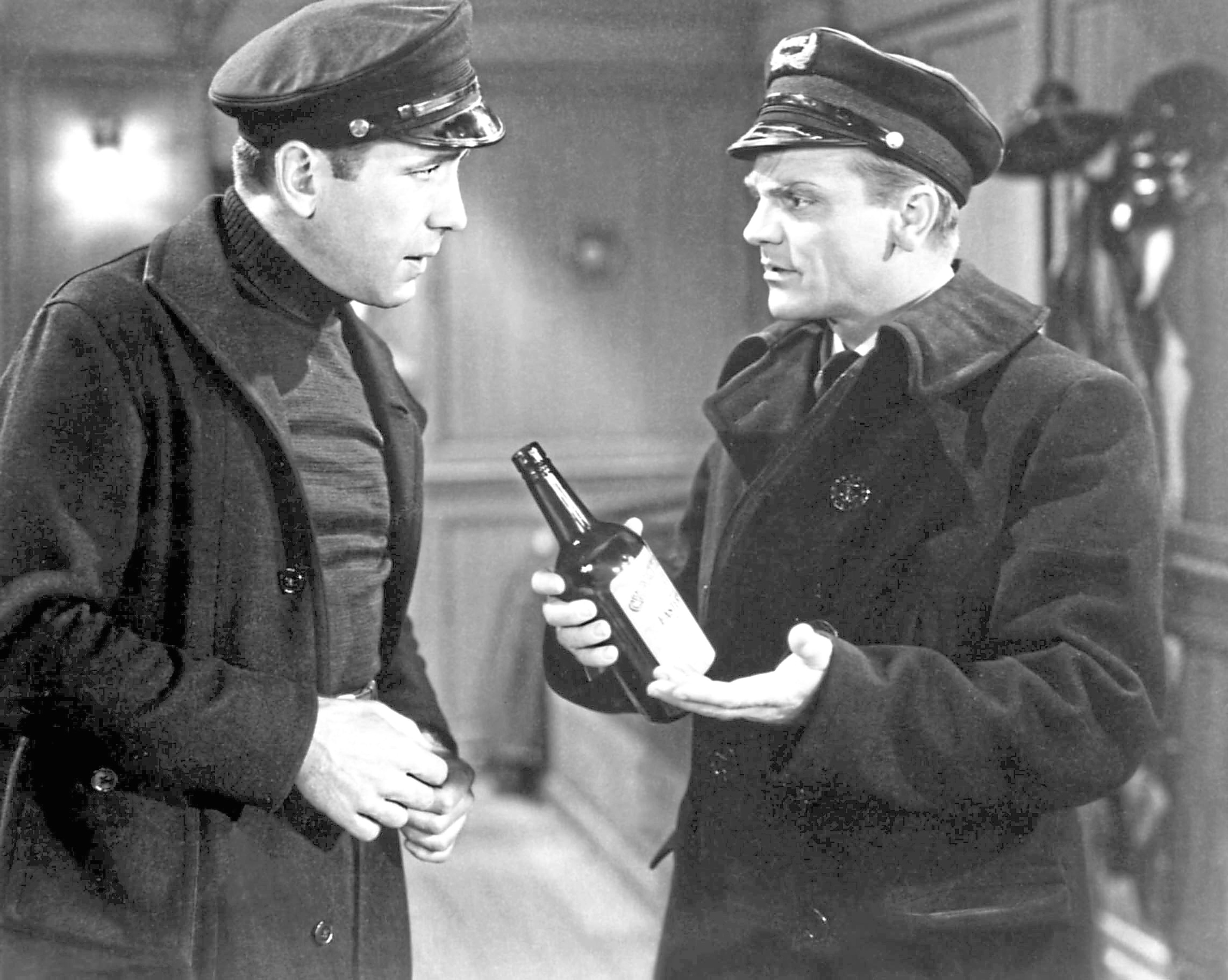
Those who don’t know much about James Cagney often “remember” him for something he didn’t even say.
He never actually uttered the phrase “You dirty rat!” in the 1932 movie Taxi or in any other, but it is often used as a supposedly typical Cagney movie quote.
There are no such doubts about Angels With Dirty Faces, and Cagney fans can tell you just about every word he says in the 1938 classic that cemented his superstar status.
Directed by Michael Curtiz, who also gave us Casablanca, Yankee Doodle Dandy and other all-time classics, James Cagney wasn’t the only star of Angels With Dirty Faces.
Humphrey Bogart, Pat O’Brien and Ann Sheridan were among a cast who conjured up a real cracker.
It came at an interesting, strange point in Cagney’s career. Often keenly involved in politics, he had agreed to sponsor the Hollywood Anti-Nazi League in 1936.
He hadn’t, alas, known that the League was actually a front for the Soviet Union’s Communist International, or Comintern.
It got him into hot water, as had his decision to take on the studios’ power to demand higher salaries, even though he was already one of Tinseltown’s best-paid names.
He was matter-of-fact about his attitude, saying, “I walked out because I depended on the studio heads to keep their word on this, that or other promise, and when the promise was not kept, my only recourse was to deprive them of my services.”
When they offered Angels With Dirty Faces, though, he was eager.
He also starred with O’Brien in his other 1938 film, Boy Meets Girl, getting mixed reviews for his comedy role. Warners were therefore keen to get him back to tough-guy roles.
In Angels With Dirty Faces, he played Rocky Sullivan, a gangster just out of jail and trying to locate old mate Jim Frazier, played by Bogart, who owed him 100,000 dollars.
While seeking him out, he meets Jerry Connolly, an old friend who is now a priest and worried about a bunch of young pickpockets, the Dead End Kids.
They idolise Rocky, but he gets himself into the worst possible situation after a shoot-out in which the cops catch him.
Sentenced to death in the electric chair, his priest pal reckons he should break down and beg for his life.
This, Jerry tells him, would be just the thing to sicken the Dead End Kids away from a life of crime, but Rocky refuses to “turn yellow”.
When it actually is time to head for the electric chair, he does indeed fall to pieces and beg for his life, but it is never made clear whether he does so to help the priest and the kids, or because he has gone yellow.
In real life, Cagney loved this kind of ambiguity, and he also seemed to have fun when being asked countless times about it, never revealing the truth!
What is not up for debate is how well he acted – Cagney got an Academy Award for Best Actor nomination, only losing out to Spencer Tracy in Boys Town.
No, we too recall the Cagney movie much better than Boys Town.
Cagney had already worked with live bullets in films, but for this one requested that the machine gun shots be fired after he had filmed his parts.
It was common to use real bullets in that Hollywood era, and Cagney would be forever glad that he made that decision.
The story goes that, once they filmed the bits with real bullets, one ricocheted precisely where his head would have been in the scene.
If you think the chemistry between Cagney and O’Brien is special, it was that way in real life, too. They became best buddies, and remained so until O’Brien’s death in 1983, just a few years before Cagney’s own death.
It’s thought that 1938 would have been a pretty miserable year for Warner Bros financially, if not for the huge success of Angels With Dirty Faces and The Adventures Of Robin Hood.
Forty years later, a punk single of the same name, by Sham 69, showed the lasting influence of the movie, and to many fans it was James Cagney’s best work.
Some of the greatest movies of all time have been based around mobsters, but even amongst them, it stands head and shoulders among most.
And it says a lot about the power of Cagney in his prime that Bogart, despite a wonderfully devilish performance himself, is often just another name further down the credits!
In some ways, that other movie from the same year was more unusual, if not anywhere near to such classic status.
A quirky comedy, Boy Meets Girl saw Cagney and O’Brien play a couple of screenwriters looking for a story they can build around cowboy star Larry Toms.
When a pregnant waitress, Susie, shows up in the office, they decide to write it around a cowboy and Susie’s unborn baby, Happy.
Needless to say, Larry gets rather miffed at having to co-star with a baby that steals every scene, and this leads to one daft turn of events after another.
The movie also managed to upset Errol Flynn – one scene cheekily had a radio announcer, played by Ronald Reagan, mention a film called The White Rajah, starring Flynn.
Trouble was, that was the name of a script that Flynn himself had written but seen rejected, and the story goes that he was less than happy to see this little in-joke on the big screen.
Not even Errol Flynn, however, would have terrified James Cagney.
Cagney, in fact, had nothing to fear in those days, and his 1939 movies would soar miles ahead of the opposition, too.
Films such as Each Dawn I Die, for instance, which is rated as perhaps the very best of any Warner Bros gangster movie, and that is saying something as they made plenty.
This time, Cagney starred alongside the great George Raft – the only movie that saw both men play the leads – although they did appear in a few films together with one or other in a lesser role.
Cagney played Frank Ross, a reporter who is unfairly thrown in jail as he tries to get the scoop on a crooked district attorney who is running for election as state governor.
He gets set up and ends up in jail but soon makes friends with someone who definitely should be behind bars, gangster “Hood” Stacey, played by Raft.
With no death penalty in their state, Stacey is behind bars on a 199-year sentence, but is soon on Ross’s side after the reporter saves him from a murder attempt in the prison.
It doesn’t end happily for anyone but Ross, who goes through hell at the hands of the prison guards in solitary, and it is a violent movie by the standards of any era.
But with Cagney and Raft in such fine form, it’s easy to see why Each Dawn I Die still gets such rave reviews by fans of all ages.
That same year, Cagney made the second of his three movies with Humphrey Bogart.
The Oklahoma Kid saw Cagney as the title character who witnesses Whip McCord – Bogie – and his gang rob a stagecoach, promptly ambushing them and taking the money for himself.
Kid hears about the gang taking over a town and letting it fall into lawlessness, and the action really hots up when McCord has his estranged father lynched.
Although his father had kicked him out for his own wild ways, the Kid seeks revenge, before marrying the girl, Jane, and leaving Oklahoma and its bitter memories behind.
He didn’t leave Bogie behind – they made their final film together later that same year, and it was also a bit special.
The Roaring Twenties saw the classic pairing back together in a gangster movie, although this unusual film covers more than just that era.
It starts with three men meeting in a First World War foxhole in No Man’s Land, and the long movie takes the three of them through various historic ages to 1933. Cagney is Eddie Bartlett, who finds his garage mechanic job has been taken by someone else while he is at war.
Bogart is George Hally, a former saloon keeper turned bootlegger, and Jeffrey Lynn plays Lloyd Hart, who is starting his own law practice.
Eddie becomes a taxi driver but is arrested after unwittingly delivering booze to a lady by the name of Panama Smith.
After some time in the clink, they go into business as bootleggers, too, Eddie using his fleet of cabs to move the illicit alcohol around.
During a heist, Hally spots a man he once despised in the Army and murders him.
Needless to say, they all fall out with each other, and it ends with Eddie being shot in the back, dying on the steps of a church.
“He used to be a big shot,” a cop is told when he asks who the dead man is.

Enjoy the convenience of having The Sunday Post delivered as a digital ePaper straight to your smartphone, tablet or computer.
Subscribe for only £5.49 a month and enjoy all the benefits of the printed paper as a digital replica.
Subscribe © Allstar / Warner
© Allstar / Warner © Allstar/WARNER BROS
© Allstar/WARNER BROS © Allstar / Warner Bros.
© Allstar / Warner Bros.